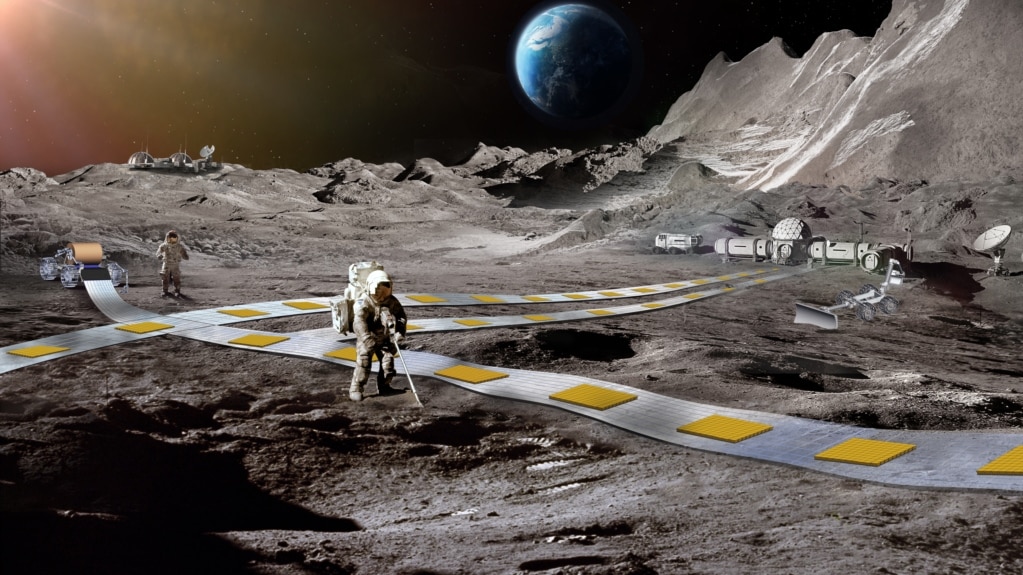The American space agency NASA is providing details about a railway system it plans to build on the surface of the moon.
The system aims to provide a “robotic transport system” to support future lunar activities of astronauts visiting the moon, NASA said in an online statement.
The railway would be part of NASA’s Artemis program. It seeks to return astronauts to the moon for the first time since 1972. The agency has set a target landing date of September 2026 to place astronauts on the surface of the moon.
NASA has said it also plans to establish a long-term moon base where astronauts could do their own exploring and carry out science experiments. Agency officials have said the base could be built as soon as the 2030s. It could also serve as a possible launch site for future exploration of Mars.
Last month, NASA also announced new efforts to develop and test new vehicle models designed to explore the moon.
The lunar rail proposal is called the Flexible Levitation on a Track, or FLOAT. NASA said such a railway system will be “critical to the daily operations” on the moon.
The main purpose of FLOAT would be to provide transportation services in areas of the moon where astronauts are active, the space agency said. This will include carrying loads of lunar soil and other materials to different areas of the lunar surface.
NASA has said it plans to mine such soil, called regolith, for substances that could support astronaut activities on the moon. Regolith can contain materials like water or liquid forms of oxygen and hydrogen. Those elements could be used to support astronauts and their equipment during long stays on the moon.
The other main use of the proposed railway would be to transport larger loads of materials and equipment to and from the areas where spacecraft land.
The FLOAT system is already being developed by engineers at NASA’s Jet Propulsion Laboratory (JPL) in California. It is based on magnetic levitation – a commonly used technology in high-speed rail development.
Drawings by NASA suggest the plans call for flat, magnetic panels, called robots, to float, or levitate, over a flat rail line, or track. The robots have no moving parts and are unpowered. They are pushed along the track by electromagnetic energy.
NASA said the simple design of the carrier robots should help them last a long time and require little ongoing care. The system’s tracks can be placed directly on the lunar surface, avoiding the need to build a complex, permanent structure. They could also be moved around to change the transportation path.
A smaller version of the FLOAT system will permit robots to transport loads up to 30 kilograms at speeds of about 0.5 meters per second, the agency said. A larger system could also be built, to enable load transports involving up to 100,000 kilograms of regolith. Such a system could permit trips of “multiple kilometers per day,” NASA explained.
The agency is currently developing and testing different parts of the FLOAT system.
FLOAT is one in a series of NASA development projects that recently received additional financial assistance to keep running. The projects are part of a NASA program called Innovative Advanced Concepts (NIAC).
Each of the projects received “up to $600,000 to continue working over the next two years” to progress further. FLOAT and the other projects already passed NIAC’s first development phase and are entering the second.
If the efforts continue to show promise, they will be able to enter phase III, which provides additional funding and support from NASA. After that, the projects will be considered for a future space mission.
I’m Bryan Lynn.

